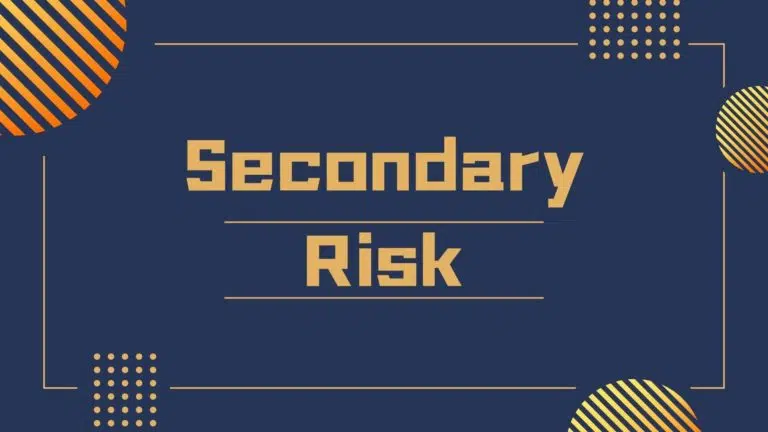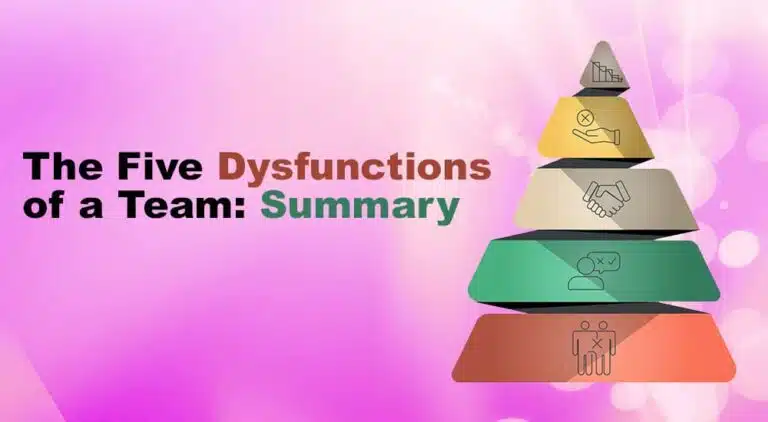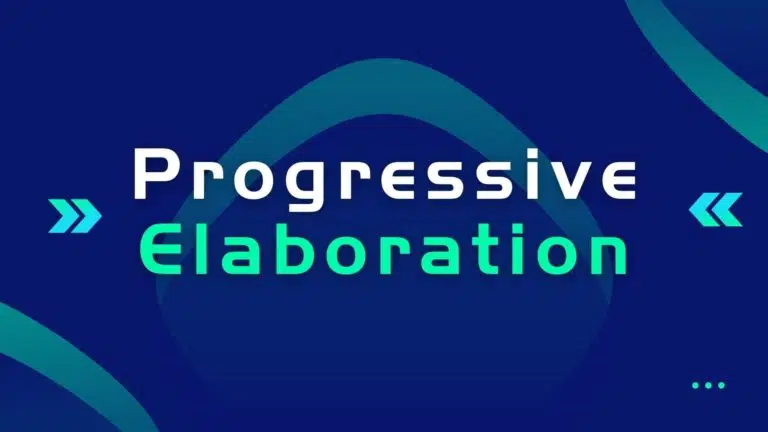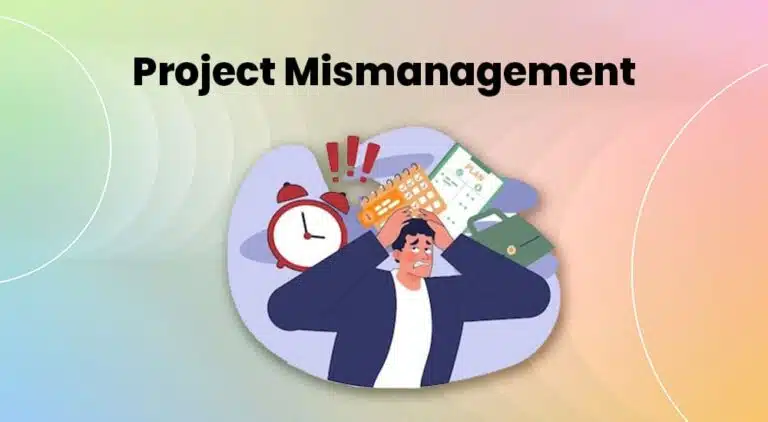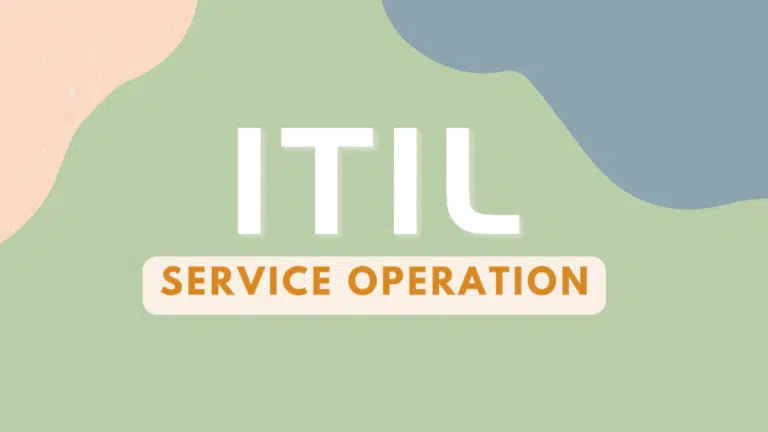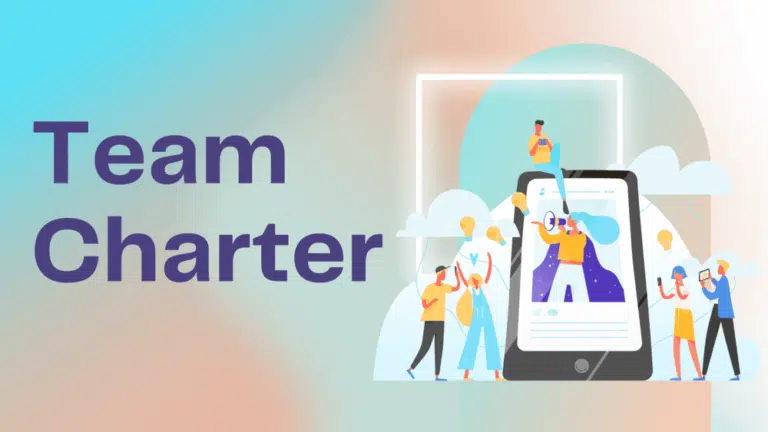Waterfall and Agile are the two most popular project management methodologies. If you work in project management, you may use any of these methodologies.
Waterfall methodologies use a sequential approach, in which the project is completed in a sequence of stages. You start each stage after completing the one before it. In the Agile approach, you develop the product incrementally and repeat the process as often as needed until the product is complete and the client accepts the deliverable.
These methodologies are different and used for different types of projects. In today’s blog post, I will explain the Waterfall and Agile frameworks and then the differences between them.
What is Waterfall Methodology?
Waterfall methodology, also known as traditional project management, is the oldest methodology for managing projects. It follows a linear pattern with different phases, with the completion of one phase marking the start of the next phase.
In the initial stage of the project, the project manager will define the project scope and develop the project plan, including the budget and schedule.
This methodology is known as “Waterfall” because it is constructed in a downward direction, similar to a waterfall.
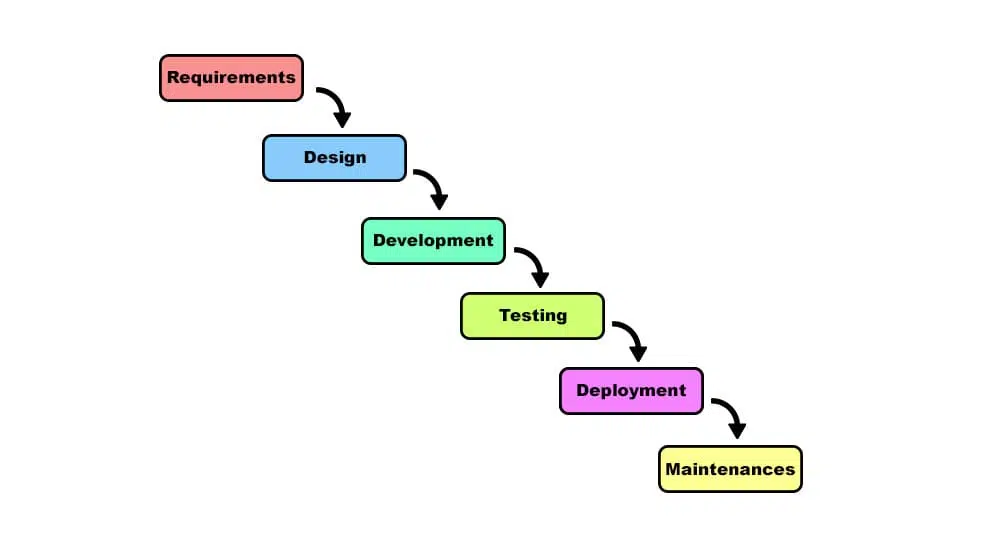
The stages in Waterfall methodology are:
- Requirements: In this stage, you will collect product and project requirements, and then develop the project scope.
- Design: In this stage, you will develop the project’s blueprint, set milestones, and decide on strategies for carrying out the planned work. This phase will provide a clear idea of the final product.
- Development: In this stage, the development team will execute the plan. The team members will start working on various project components.
- Testing: After developing the first version of the product, the development team will hand it over to the quality control team for testing, which will ensure high product quality, bug-free code, and high performance.
- Deployment: In this stage, the client will deploy the final product for its intended application, and users will get a chance to use it for the first time.
- Maintenance: Some projects have a maintenance clause for a certain duration after deployment. After this duration, the client can request further product maintenance. The new maintenance contract can include regular troubleshooting, finding areas for improvement, and upgrading the product.
Benefits of Waterfall Methodology
- Simplicity and Ease: The waterfall methodology is easy to use because it is uncomplicated and straightforward to plan, understand, and implement. It is simple to manage because each stage has clearly defined review processes and output.
- Improved Clarity: The scope of work is well defined; task assignments, roles, and responsibilities are clear, and there are fewer schedule conflicts. Everything is clear from the beginning of the project.
- High Visibility: The project manager can measure the project using KPIs, compare it against the planned progress, and communicate to the stakeholders using performance reports. All stakeholders can see the progress, which motivates them to perform better.
- Efficient Project Monitoring: Since every activity is planned in great detail, and the scope of work is fixed, project managers can monitor and control the project progress more easily.
Drawbacks of Waterfall Methodology
- Less Flexibility: Changes to the Waterfall framework are time-consuming and expensive. The project manager must submit the change requests to change-control boards. If they are approved, the project manager must update the project baselines and other affected project documents.
- Unidentified Risks: If any unidentified risks occur and affect the project objectives, then the project manager must raise change requests to amend the project baselines, which is also a time-consuming process.
- Start-from-Scratch Syndrome: Start-from-scratch syndrome is like reinventing the wheel; investing effort in something that already exists is a waste of time. In Waterfall project management, project managers often develop the project plan and other documents from scratch. Instead, they should use templates to create project plans and documents, which will save time and effort.
- Less Stakeholder Interaction: Waterfall projects have minimal customer interaction, which can lead to misunderstanding the client’s requirements and customer dissatisfaction.
Is Waterfall Project Management Right for Me?
If your project has well-defined requirements and changes are rare, the Waterfall project management methodology is the best option. It best suits projects with fixed requirements and fewer changes during the project lifecycle.
Agile methodologies are best for projects with changing or unclear requirements.
What is Agile Methodology?
In the spring of 2000, 17 software developers met in Oregon to discuss speeding up the software development process and launching quick products. A few months later, they met again to plan a list of principles. The outcome was the Agile Manifesto, which included four Agile values, and 12 Agile principles.
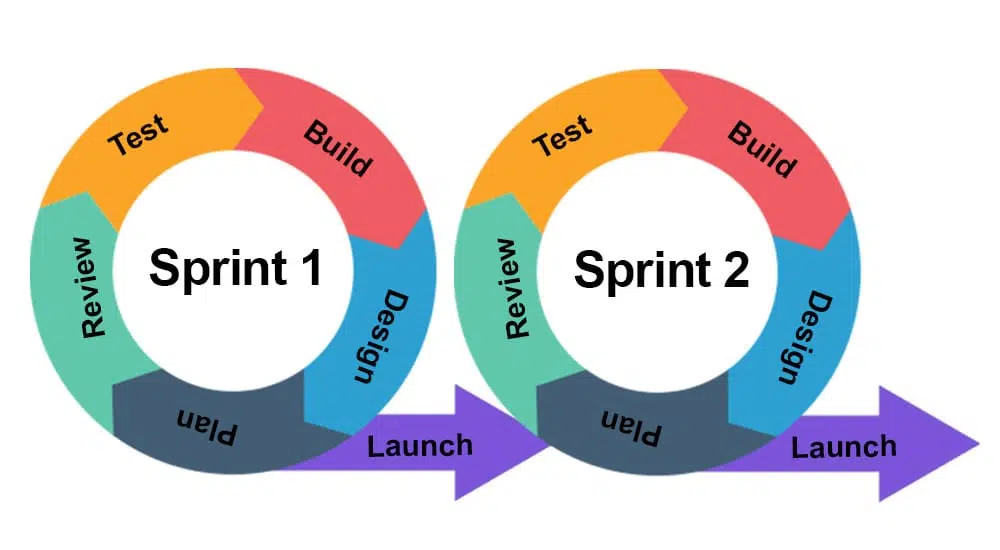
Traditional, rigid approaches are not helpful in software project management, so developers produced more flexible, adaptable approaches known as “Agile methodologies.”
According to the Project Management Institute (PMI), the objective of the Agile methodology is to provide an early and measurable return on investment (ROI) through the iterative delivery of product features.
Agile project management is an iterative and collaborative approach to managing software projects. Unlike the Waterfall methodology, which depends on detailed upfront planning, Agile emphasizes flexibility, adaptability, and customer-centricity.
You break the project into small increments called iterations or sprints, normally lasting a few weeks. During each iteration, cross-functional teams deliver a tangible product to the client. The client provides feedback, which is incorporated into the next iteration, ensuring that the final product meets evolving requirements and expectations.
One of the core principles of Agile is adaptability. Plans are flexible guides rather than rigid contracts, allowing teams to respond quickly to changes in priorities, market conditions, or customer needs. By adapting to change and focusing on delivering value incrementally, Agile teams mitigate risks, accelerate time to market, and promote a culture of innovation and continuous improvement.
Benefits of Agile Methodologies
- Shorter Turnaround Time: Agile methodologies accomplish tasks and produce deliverables quicker.
- More Flexible: The Agile framework’s adaptability allows for changes without any disruptions, which is its major advantage over traditional project-management methodologies.
- Earlier Risk Detection: Since planning is continuous and iterative, risks are identified and managed proactively, which limits emergency responses and workarounds.
- Better Quality Product: Regular testing, client involvement, and feedback incorporation ensure a high-quality product with stakeholder buy-in.
Drawbacks of Agile Methodologies
- More Time and Effort Spent on Making Changes: Since Agile approaches welcome adaptability and changes, they often encourage unnecessary changes, which wastes time and effort.
- Undefined Project Timeline: Agile methodologies do not develop a detailed project plan in the beginning, so project managers cannot provide a schedule or timeline for completing the project.
- No Fixed Budget: The lack of a defined plan makes it difficult to provide the project budget, which often makes it difficult to get financing from investors.
- Greater Customer Dependency: Agile success depends on customer collaboration and feedback. If customers are unavailable or their requirements lack clarity, this can hinder project progress and decision-making.
Is Agile Right for Me?
Agile methodologies are frequently used in software development projects. These projects have continuous changes in requirements and feedback incorporations.
You must first evaluate the project’s needs, then determine the stakeholders’ expectations, and finally select the project management methodology based on the organizational guidelines.
Agile projects have the following characteristics:
- Speed
- Focus
- Extensive Collaboration
Agile Vs Waterfall
The below table shows the key differences between Waterfall and Agile frameworks.
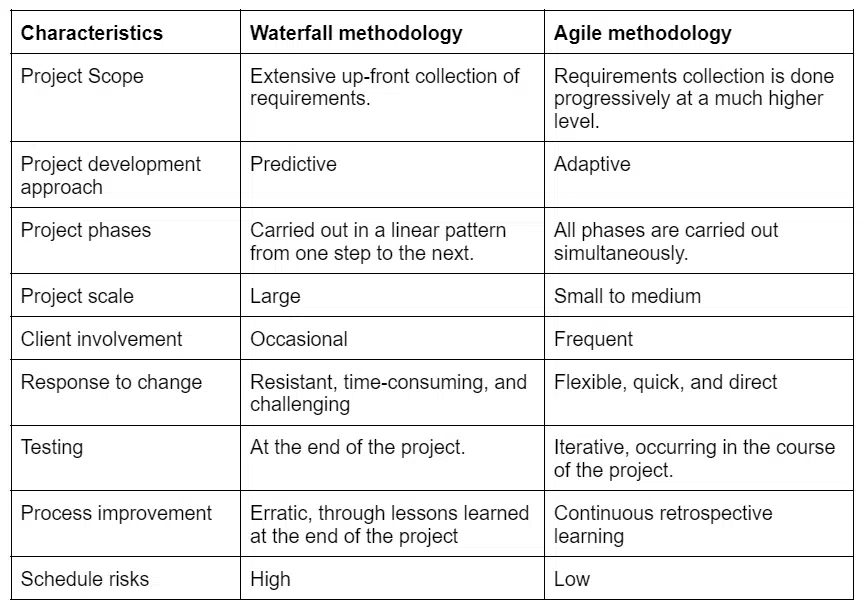
How to Select the Right Methodology for Your Project
Choosing the right methodology for a project is easy.
You should select Waterfall project management methodology if the project and product requirements are defined, and the project requires no changes. If you have a construction project, then you should select a traditional approach, as requirements are fixed, and you will follow a sequential, linear path to produce the deliverable.
However, if the product or project requirements are not clear upfront, then you should select an Agile framework, depending on the project and your requirements. If the project is to develop a software product, then you will most likely select an Agile framework, as these frameworks are specifically developed to manage software projects.
Dr. Chris Mattmann, Chief Technology and Innovation Officer (CTIO) at NASA Jet Propulsion Laboratory, told Forbes Advisor, “Agile methodology is used more for IT companies, [companies] that fail fast and move fast, types of places where you can proceed in parallel in different phases.”
Conclusion
Waterfall project-management methodology is useful when the scope of work is well-defined. If the requirements are not clear, then Agile frameworks are better choices. The degree of customer involvement is also a key factor in choosing the right methodology. Agile frameworks encourage client involvement, while Waterfall frameworks have minimal client interaction.

I am Mohammad Fahad Usmani, B.E. PMP, PMI-RMP. I have been blogging on project management topics since 2011. To date, thousands of professionals have passed the PMP exam using my resources.

